Out of the Closet, Into the Fire? A Response to Kathryn Raign’s “Let Me Out! I’m Stuck in the Closet!”
/In her July 21st blog post on AXIS, Kathryn Raign asked whether writing centers housed in insalubrious environments, and their directors, are being unfairly evaluated by student users. She posited that they are, based on her opportunity to measure student satisfaction with the space anew when the center she directs was moved. I say ‘was moved’ because Raign also makes the point that writing center directors, while able to control internal factors like staffing and training, often have little to no control over ‘external’ factors like center location, design, and equipment. While she, and we, were lucky to be highly involved in the design process for a new writing center, Raign notes that this is an unusual position for writing center directors to find themselves in.
In the center that houses AXIS and its parent journal, Praxis, we have recently had a chance to evaluate Raign’s argument for ourselves, though at this point only anecdotally; we’ve just moved into a new space in the University of Texas at Austin’s Perry-Castañeda Library Learning Commons, a new venture that offers students a number of services in a central, high-use location. The entire space is huge: 20,000 square feet all told, including four Learning Labs saturated with collaborative digital tools in a classroom-reminiscent space, two larger multi-use rooms and a 44-screen Media Lab equipped with media creation tools and the software to use them, and the University Writing Center which takes up 4,500 square feet – almost a quarter of the whole!
Perry-Castañeda Library Learning Commons (in blue), Ground Floor Plan
The center itself boasts a wall of floor to ceiling windows (something conspicuously lacking in the old center, which had some of the qualities of a bunker) and three low-distraction rooms, offices for administrative staff, and enough tables to start a restaurant with. It’s white and clean and cool – perhaps too cool, as we sit below the HVAC hub for the entire building – and instead of being located in a mostly-administrative building, we’re on the ground floor of the busiest building on campus. It’s fair to say that student reaction has been positive.
Student exit comments so far this semester include statements like these: “I enjoyed the renovated space the writing center was located in” and “I found the specialized no-distraction rooms really helpful. I was able to concentrate better and I could say my thoughts out loud.” More numerous are positive comments on “the whole experience” or “the atmosphere,” though plenty of students wrote things along the lines of “[I]t’s cold… but I had a great experience.” From this slight evidence it seems likely that students notice and appreciate the new location and the design and atmosphere of the space itself, whether or not they find themselves slightly colder than even a Texas building in the summer usually makes them.


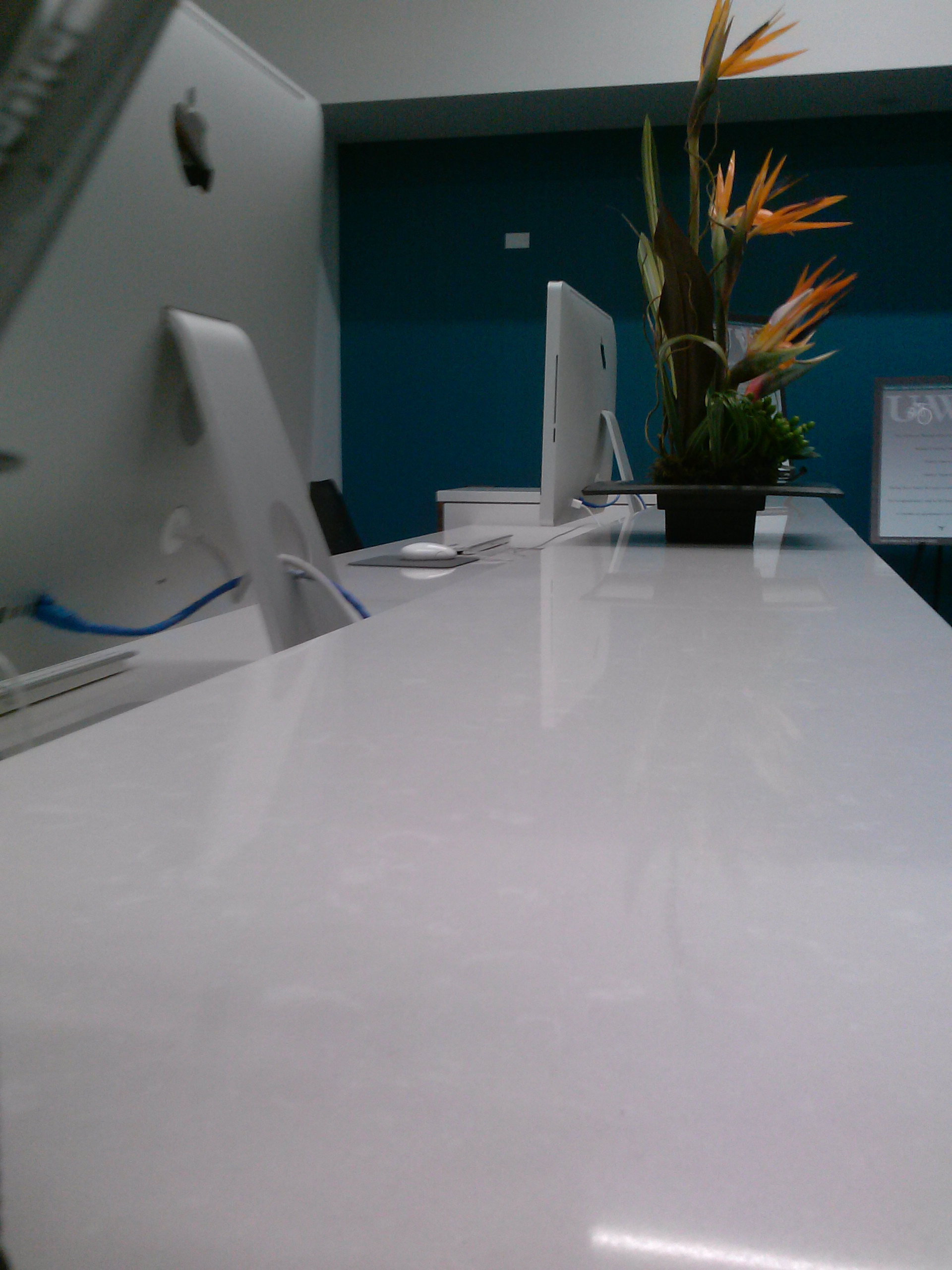
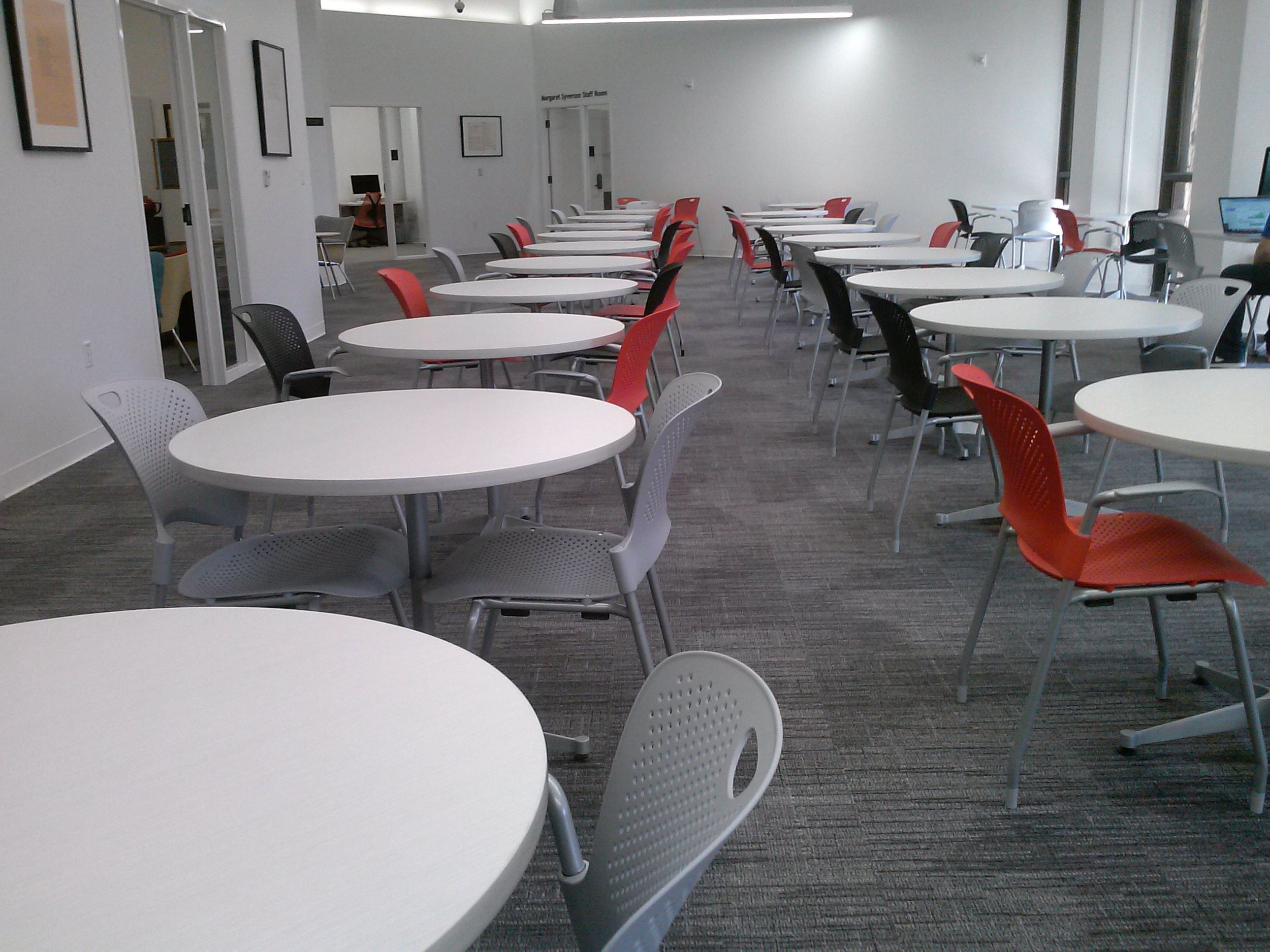
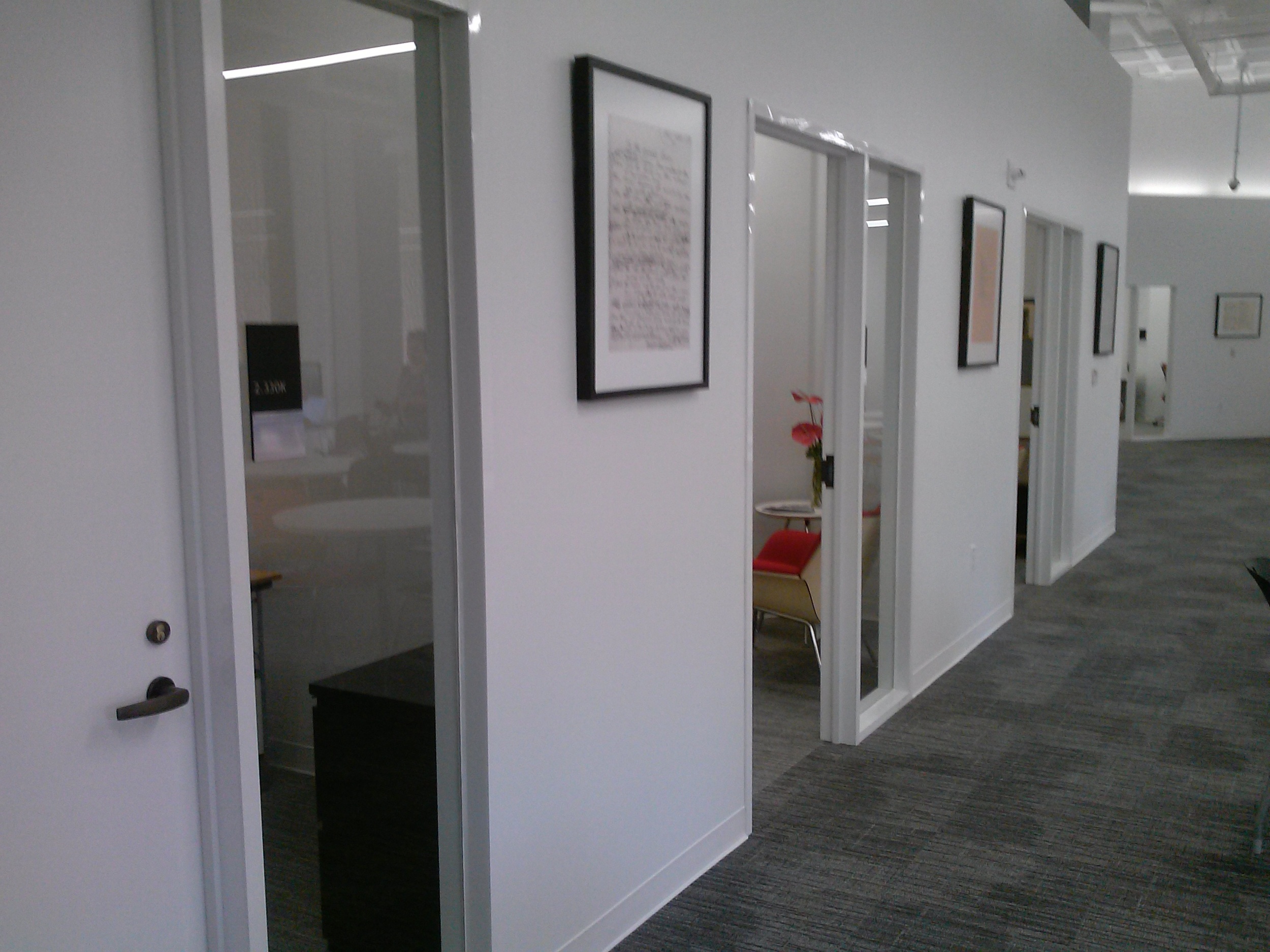
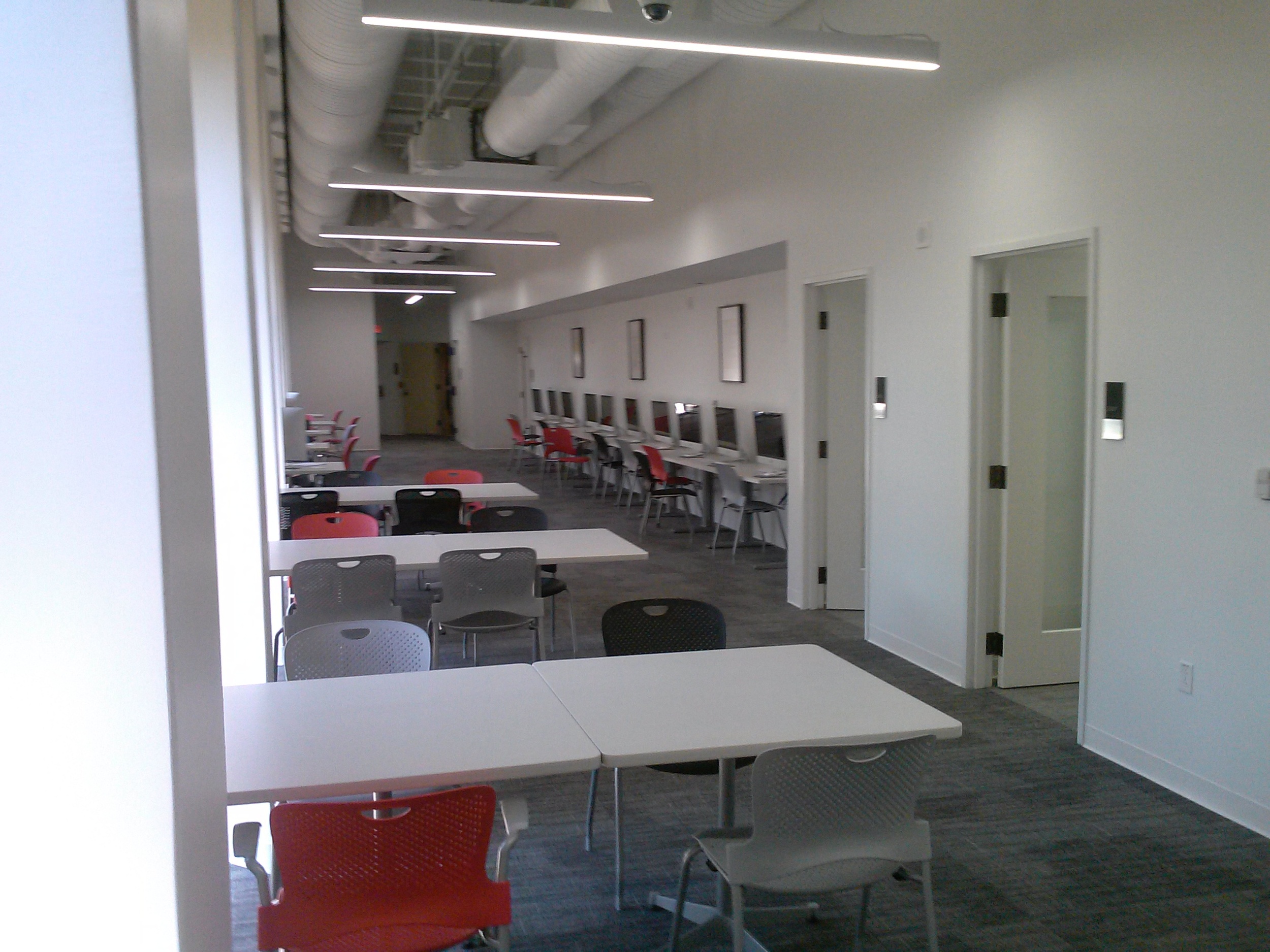
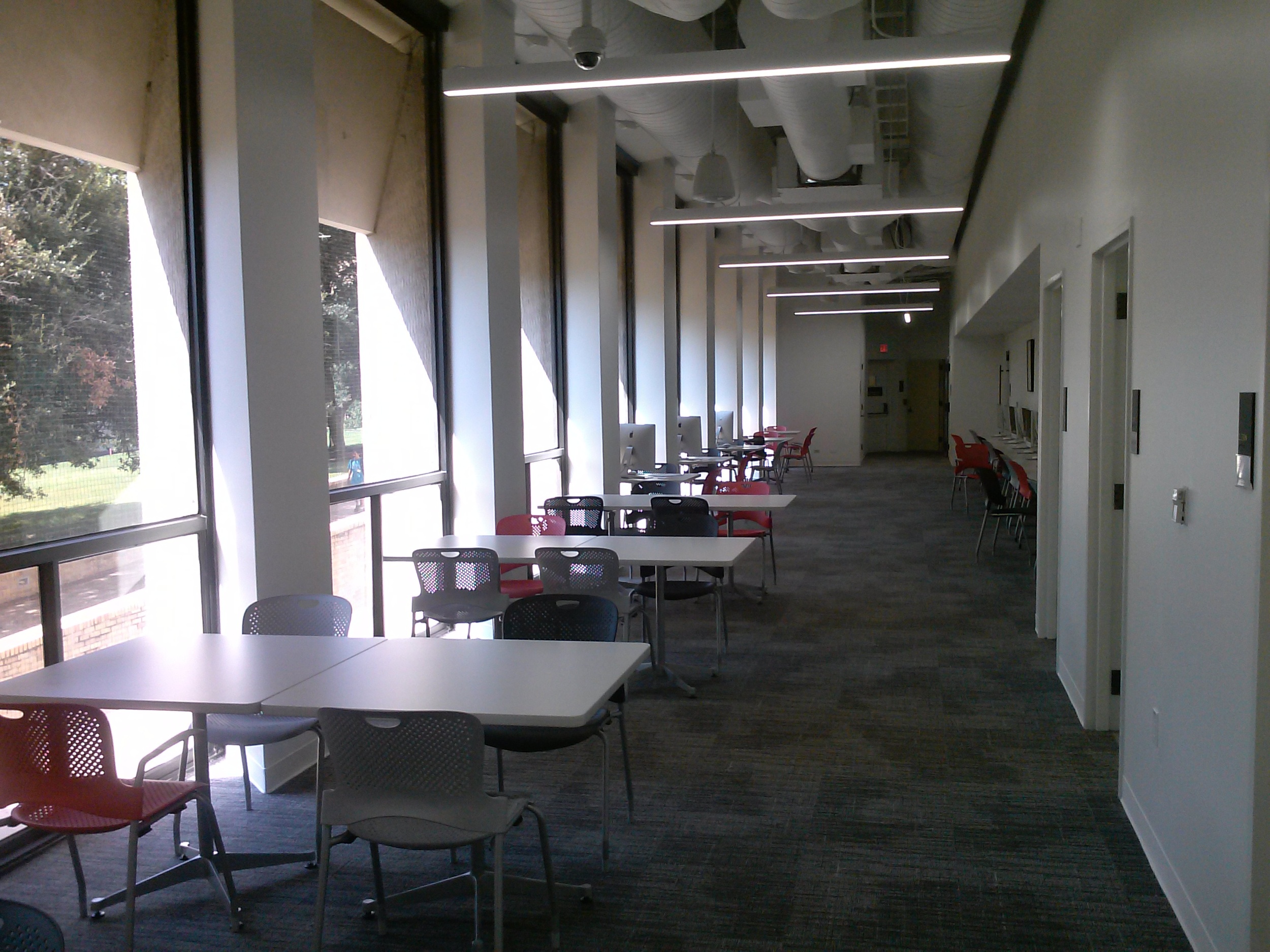
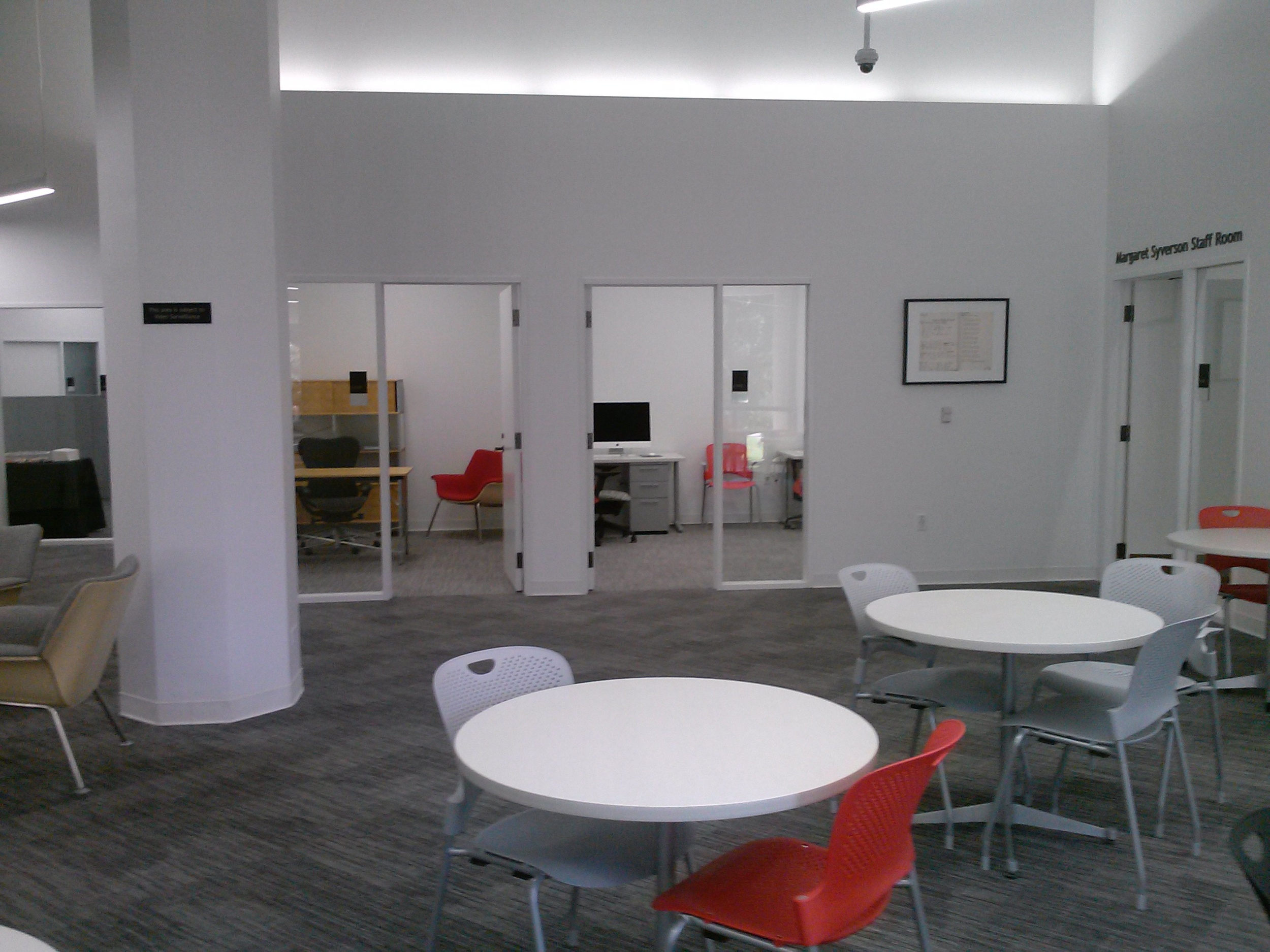
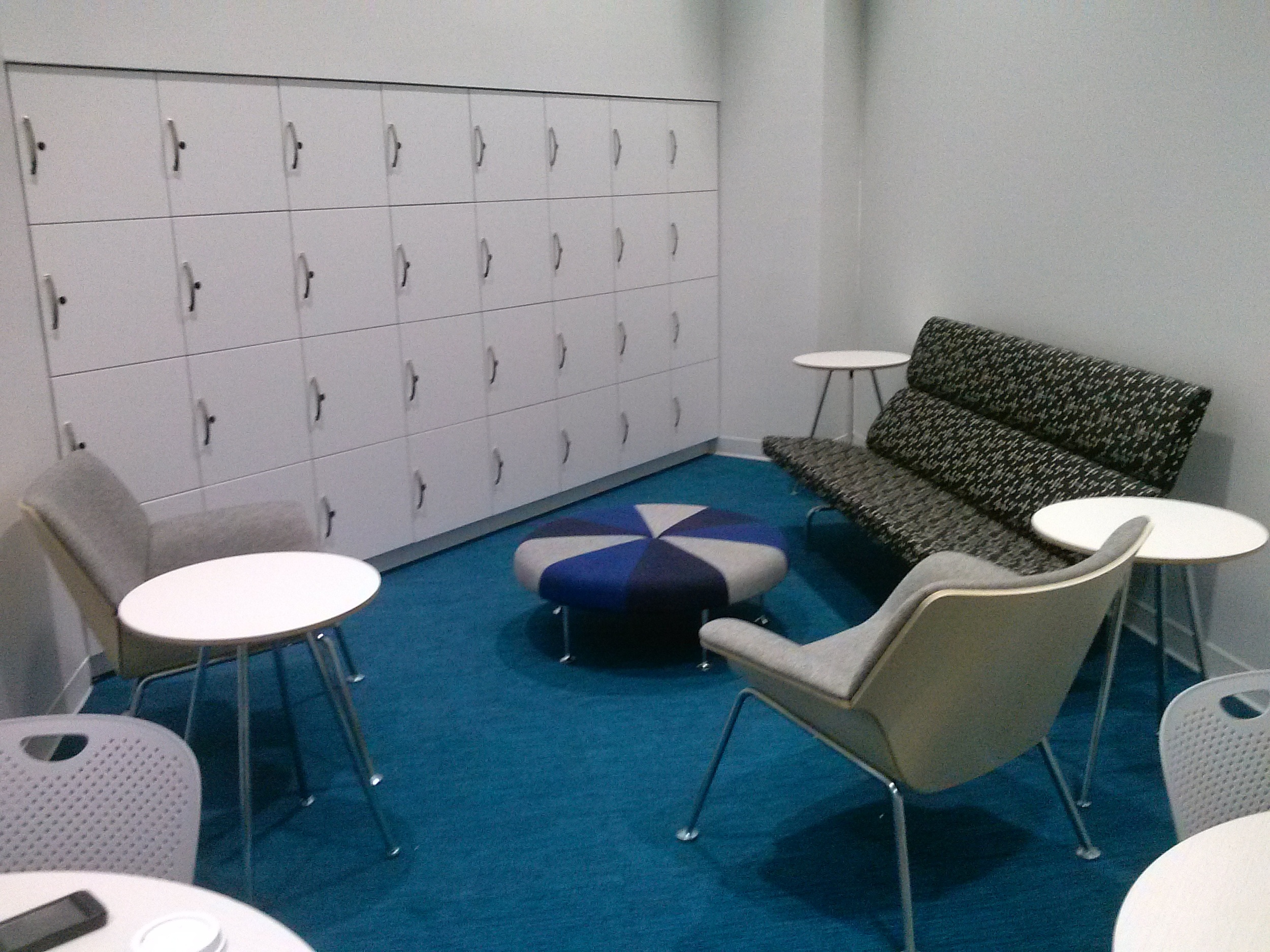
Images taken by author, Thomas Spitzer-Hanks
The transition hasn’t been without hiccups; beside climactic conditions the space is still being perfected: today we have two guys on a very tall ladder doing something with the wiring in the ceiling, the ladder set up in the middle of the consulting floor, yesterday a guy was using a shopvac and last week there was a memorable day of power tool use. Aside from this there is the inevitable logistical tangle, getting the copier to work again and the mail to be delivered, revising guidelines and retraining consultants and front desk staffers to deal with unexpected changes to center routine, but none of this necessarily refutes or even mitigates Raign’s larger point: as she notes, her data “supports the importance of the physical space in which writing centers are typically housed, and reiterates the need for writing centers to be designed intentionally, not squeezed in wherever the administration can find room, and outfitted with furniture and equipment that no one else wants” and we’ve seen numerous comments on the space’s effect on student satisfaction. Our general undergraduate staff has expanded, through cooperation with Student Veteran Services we now have consultants, themselves veterans, dedicated to serving student veterans, and most days our daily appointments are all full by noon. We also now offer faculty members the assistance of embedded Course Specialist Consultants, and we've also expanded our clientele through the hard work of two post-docs who consult with graduate students from the College of Liberal Arts for ten hours a week.
The questions that remain to be answered, and which Raign doesn’t touch on in her post, are these: will there be a downside to being larger, more central, in a highly visible space with more resources and, thus, an increased need for assessment and accountability? Is a highly ‘successful’ center in terms of certain metrics still a ‘good’ writing center? Raign’s main argument is that a majority of centers are not intentionally-housed in custom spaces and that institutional effort should be allocated towards changing that, and this is certainly true; however, for centers like the one that houses AXIS, there is a different set of questions to be asked. It remains to be seen how this place will become a space, to borrow De Certeau’s taxonomy, and how this space will become ‘practiced’ and comfortably part of the habitus of its users. Edward Soja (1989) notes that spatiality in de Certeau’s sense involves understanding "the organization, and meaning of space” as “a product of social translations, transformations, and experience" (80). Seen as a function of the intersection of place and being, the space of the writing center is misrecognized simply as its physical location, design, or equipment; the use it is put to and the way that use feels over time remains the vital, transformative variable. This is an implicit message of Raign's study, and one that is of much-increased import in an 'improved' writing center: to lose a sense of community among the consultants and the admin staff, to become too focused on the technics of center administration or expansion, to allow a slick space to morph into a slick ethos, might be to lose the genius loci of the writing center and damage the writing center's ability to meet students where they are. Whether that will happen, though, remains to be seen.
Soja, Edward. Postmodern Geographies: The Reassertion of Space in Critical Social Theory. London: Verso, 1989.
